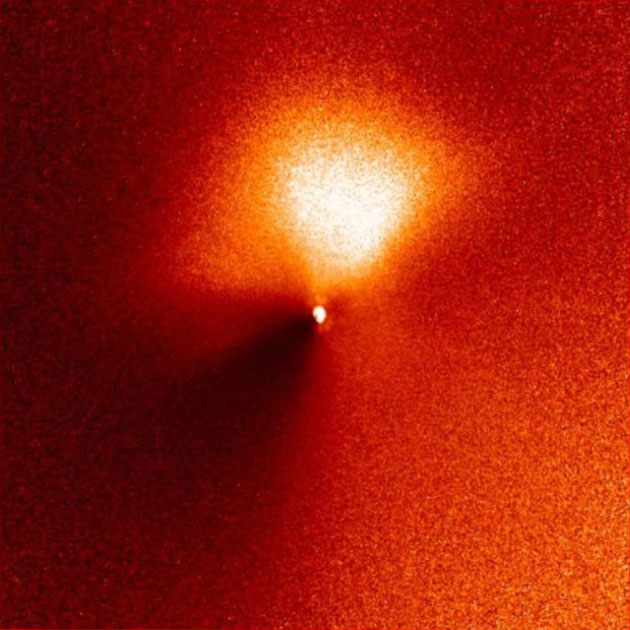|
Jun 30, 2005 from Thunderbolts Website
Credit: NASA ,ESA ,
P. Feldman (Johns Hopkins University) and H. Weaver (Johns Hopkins
University Applied Physics Laboratory)
The scientific media have vigorously
promoted the coming "Deep Impact" encounter with comet Tempel 1. But
comet experts are not going to see what they've expected, say
theorists of the "electric comet".
But by penetrating beneath the nucleus'
surface, the exploding projectile from the Deep Impact probe will
eject into space large volumes of underlying material. Instruments
on board the probe will observe, measure, and analyze it. According
to NASA scientists, the released material will provide a sample of
the primordial water, gas and dust from which the Sun, planets,
moons, and other bodies in the solar system formed.
It is a theoretical guess based on a theory that from the beginning has been contradicted by observations. According to proponents of the Electric Universe, such as Wallace Thornhill and Don Scott, comets have the potential to challenge the underpinnings of space science today.
According to the cosmic electricians, everything we have learned about comets challenges the old paradigm:
These features are expected in the Electric Universe model. In that model, cometary intruders are highly negatively charged in relation to the Sun. The Sun is the positively charged body—the anode—at the center of an electric field reaching past the planets to the remote "heliopause."
The heliopause is the insulating sheath
or electrical boundary that mediates between the electric potential
of the Sun and that of interstellar space. As a comet approaches the
Sun from more remote, negative regions, it grows increasingly out of
balance with its surroundings and begins to discharge electrically.
All the surprising and anomalous observations in the previous list
are typical characteristics of electrical discharges in plasma.
The variability in cometary material already discovered supports this view.
Deep Impact will thus provide
another important test of the electric comet theory.
|

